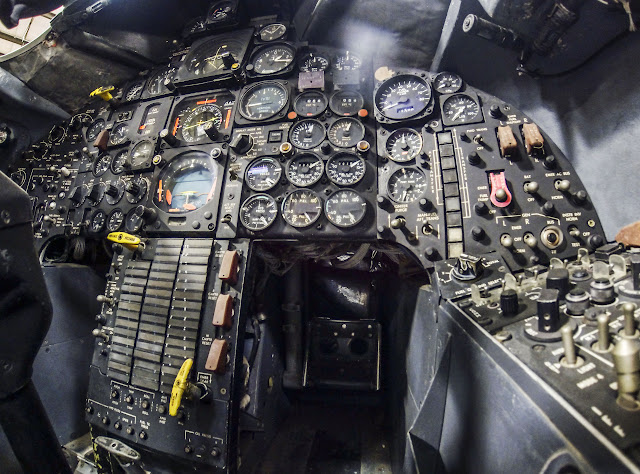Saturday, January 21, 2017
No cockpit demands as much intense focus as an SR-71 Blackbird’s, and in frustrating irony, no cockpit offers a better view. There was no time to look out the window. The plane knew when your eyes started to wander to the spectacle of earth from 85,000 feet; that’s when something would go wrong. There was much to monitor. The many “steam gauge” instruments reflect a bygone era, giving the pilot information ranging from heading to compressor inlet temperature, each dial representing a critically important system.
Even though this cockpit was operated through 2,854 flight hours, it looks brand new. That’s because it was only ever flown using the gloved hands of a crew member wearing the essential high altitude pressure suit. Every control is large enough to be adjusted with those bulky pressure suit gloves.
You sit atop your throne, the SR-1 ejection seat, which carries a rare 100% success rate. To operate the circuit breakers, you must reach beside and behind your seat, outside your field of view through the pressure suit helmet. To make sure you actuate the correct breaker, you count down the rows and columns by feel.
March Field Air Museum in Riverside, California, is kind enough to display SR-71A 17975 with her cockpit open. This gives us a rare peek inside the world of the Blackbird, allowing us to look inside something that was formerly top secret and reserved only for a privileged few crew members. These photos were captured using a camera extended into the cockpit via monopod. At no point did I or my equipment come in contact with the artifact.
Subscribe to:
Post Comments (Atom)











No comments:
Post a Comment